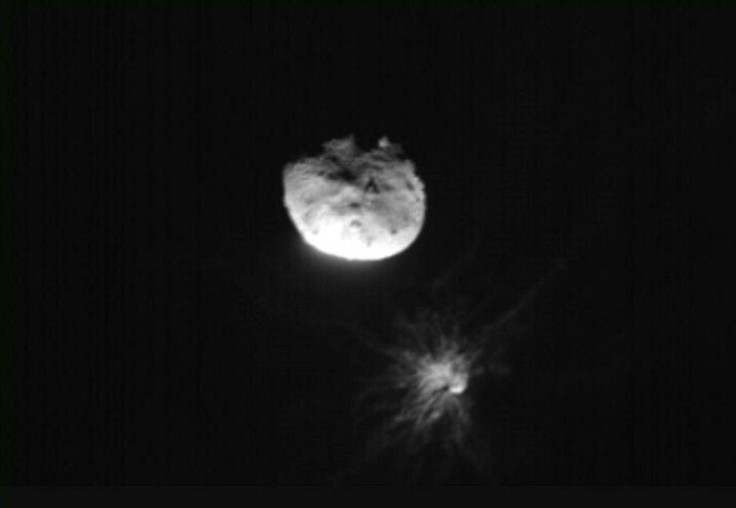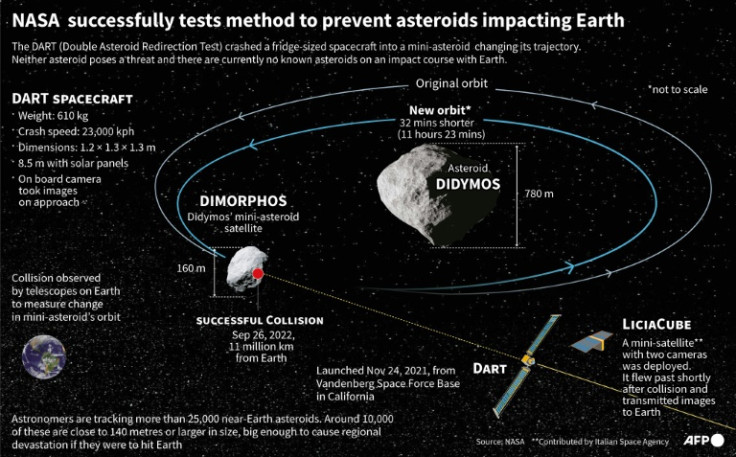Weather May Delay Launch Of Mission To Study Deflected Asteroid

Stormy weather has threatened to delay the launch of Europe's Hera spacecraft, which is scheduled to blast off on Monday, SpaceX has said.
The probe will head off on a mission to inspect the damage a NASA spacecraft did to an asteroid when it smashed into it in 2022 during the first test of Earth's planetary defenses.
The Double Asteroid Redirection Test (DART) deliberately crashed into the pyramid-sized asteroid Dimorphos roughly 11 million kilometers (6.8 million miles) from Earth.
The fridge-sized spacecraft successfully knocked the asteroid well off course, demonstrating that humanity may no longer be powerless against potentially planet-killing asteroids that could head our way in the future.
But much about the impact remains unknown, including how much damage was done and exactly what the asteroid was like before it was hit.
So the European Space Agency (ESA) says it is sending Hera to the asteroid to conduct a "crime scene investigation" in the hopes of learning how Earth can best fend off future asteroids.
The spacecraft is scheduled to blast off on a SpaceX Falcon 9 rocket from Cape Canaveral in the US state of Florida at 10:52 am local time (1452 GMT) on Monday.
However thunderstorms have been forecasted in the launch area. SpaceX said on X on Sunday that the weather is currently only 15 percent favorable for a launch.
If a delay is required, a back-up launch is planned for Tuesday 10:46 am local time, SpaceX said.
The launch window for the mission will remain open until October 27.
The launch had also faced a potential delay due to an anomaly involving a Falcon 9 rocket during the launch of SpaceX's Crew-9 astronaut mission late last month.
But on Sunday, the US Federal Aviation Administration gave the green light.
"The absence of a second stage re-entry for this mission adequately mitigates the primary risk to the public in the event of a reoccurrence of the mishap experienced with the Crew-9 mission," it said in a statement.
The launch window for the mission will remain open until October 27.
Once launched, Hera is planned to fly past Mars next year and then arrive near Dimorphos in December 2026 to begin its six-month investigation.
Dimorphos, which is actually a moonlet orbiting its big brother Didymos, never posed a threat to Earth.
After DART's impact, Dimorphos shed material to the point where its orbit around Didymos was shortened by 33 minutes -- proof that it was successfully deflected.
Analysis of the DART mission has suggested that rather than being a single hard rock, Dimorphos was more a loose pile of rubble held together by gravity.
"The consequence of this is that, instead of making a crater" on Dimorphos, DART may have "completely deformed" the asteroid, the Hera mission's principal investigator Patrick Michel told a press conference.
But there are other possibilities, he said, adding that the behavior of these low-gravity objects is little understood and "defies intuition".
The 363-million-euro ($400 million) mission will be equipped with 12 scientific instruments and two nanosatellites.


© Copyright AFP 2025. All rights reserved.





















